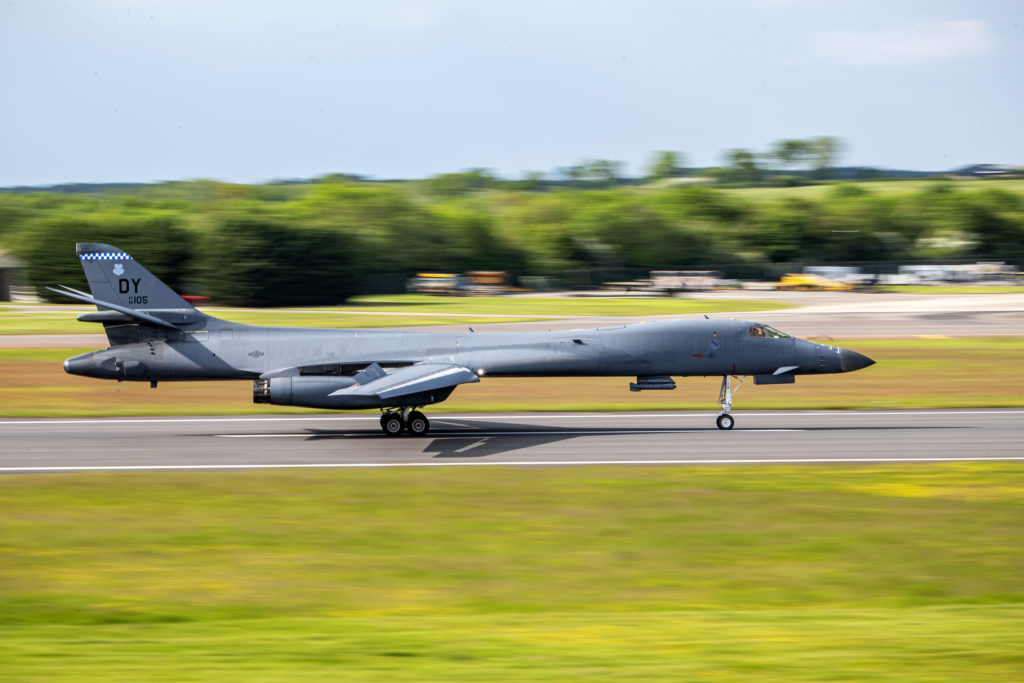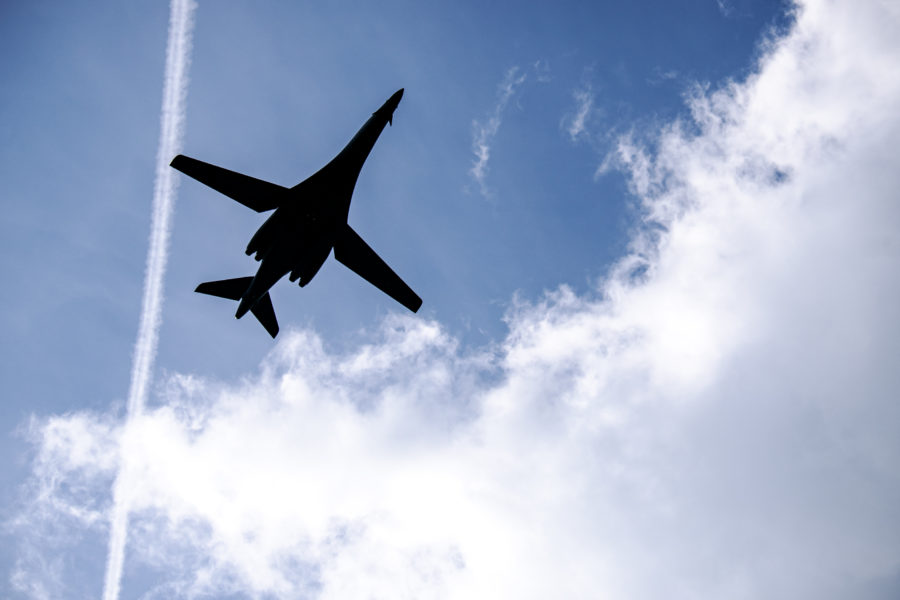Four U.S. Air Force bombers are deploying to Europe as part of a reassurance mission for America’s NATO allies. It did not take long for Russia to take note.
Two B-1B Lancers “were operating in international airspace in the Baltic Sea region alongside NATO allies and partners during their theater arrival” when the U.S. bombers had an “unplanned interaction with foreign fighter aircraft,” a spokesperson for U.S. Air Forces in Europe (USAFE) told Air & Space Forces Magazine.
The Russian Ministry of Defense said an Su-27 Flanker was dispatched to monitor the American bombers. A spokesperson for U.S. European Command (EUCOM) said the B-1s “were interacted with safely and professionally by Russian aircraft.”
The two B-1s landed at RAF Fairford, U.K., where they will be joined by two more B-1s on May 25 to fill out the rest of the Bomber Task Force mission, designed to support “NATO deterrence initiatives,” according to a USAFE press release issued May 23.

“Two of the Texas-based supersonic bombers from Dyess Air Force Base’s 7th Bomb Wing entered the theater today by first integrating with allies and partners conducting NATO’s Air Policing and Air Shielding missions throughout the Baltic Sea region,” USAFE added. “The Baltic Sea serves as a critical economic corridor, and consistent coalition surveillance of the international air and maritime space preserves safe and secure passage for all.”
Air Policing and Air Shielding are NATO efforts to bolster the alliance’s eastern flank to prevent further Russian aggression in Europe as Russia’s full-scale war in Ukraine continues.
“The highly agile aircraft’s 12-hour mission from North America to Europe demonstrates the U.S. Air Force’s rapid ability to deploy anywhere, anytime, and provide lethal precision and global strike options U.S. and allied commanders,” USAFE said in its release.
EUCOM and USAFE representatives said they did not immediately have further details to add about the encounter with the Russian aircraft.
Armed Russian fighters have been less kind towards American aircraft over Syria in recent months. Russian planes have gotten within 500 feet of U.S. planes at times in what U.S. officials have said are potentially dangerous interactions. Two Su-27s harassed an America MQ-9 Reaper over the Black Sea in March. One of the Russian fighters clipped the drone’s propeller and forced the American military to intentionally crash the aircraft due to the damage, according to the Pentagon.
But Pentagon Press Secretary Air Force Brig. Gen. Patrick S. Ryder, as well as the EUCOM and USAFE officials, said the most recent incident involving Russian and American aircraft was not alarming.
“This is a long-planned exercise in Europe,” Ryder said, adding Bomber Task Force missions led by Air Force Global Strike Command “fly regularly around the world.”
